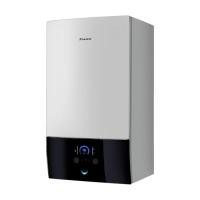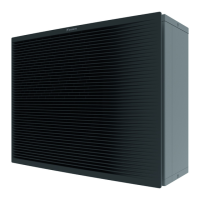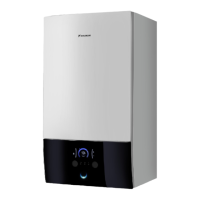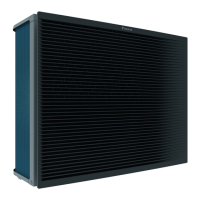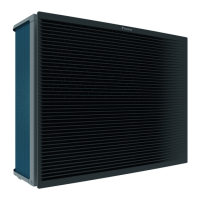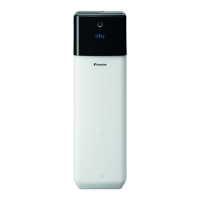What to do if water is flowing out of my Daikin H Series?
- RRobert FoxAug 20, 2025
If water is flowing out from your Daikin Air Conditioner, switch off the unit and contact your nearest dealer.
What to do if water is flowing out of my Daikin H Series?
If water is flowing out from your Daikin Air Conditioner, switch off the unit and contact your nearest dealer.
Why is my Daikin Air Conditioner airflow so weak and not cooling the room?
If your Daikin Air Conditioner's airflow is too slow, or the room isn't cooling enough, several factors could be at play. First, check the air filter; a dirty filter can significantly impede airflow, so clean it. Ensure that all doors and windows are closed to prevent warm air from entering the room. Also, make sure that neither the air suction nor the discharge vents of the indoor and outdoor units are blocked. Finally, verify that the temperature setting is appropriately low.
Why does my Daikin H Series have a bad odor?
If you notice a bad odor from the airflow of your Daikin Air Conditioner, it might be due to cigarettes, smoke particles, or perfume that have stuck to the coil. Contact your nearest dealer for assistance.
Why does my Daikin Air Conditioner discharge airflow have a bad odor?
If your Daikin Air Conditioner emits a bad odor, it could be due to smoke particles, perfume, or other substances that have stuck to the coil. It is recommended to contact your nearest dealer.
What to do if water is flowing out from my Daikin Air Conditioner?
If water is flowing out of your Daikin Air Conditioner, switch off the unit and contact your nearest dealer.
Why does my Daikin H Series compressor run continuously?
If the compressor on your Daikin Air Conditioner runs non-stop, check if the air filter is dirty and clean it. Also, adjust the temperature setting: use a higher setting if cooling, or a lower setting if heating.
What to do if my Daikin H Series has condensation on the front grille?
Condensation on the front air grille of your Daikin Air Conditioner's indoor unit is usually due to air humidity or a too-low temperature setting after prolonged use. Increase the temperature setting and operate the unit at high fan speed to resolve this.
Why is the airflow from my Daikin Air Conditioner too slow?
If your Daikin Air Conditioner's airflow is too slow or the room isn't cooling enough, several factors could be the cause: - The air filter might be dirty. - Doors and windows might be open. - The air suction and discharge of both indoor and outdoor units might be clogged or blocked. - The regulated temperature or temperature setting might not be low enough.
How to restart Daikin Air Conditioner after power failure?
If your Daikin Air Conditioner unit doesn't turn back on after a power outage, try turning on the unit using the wireless or wired controller. It's possible that the auto-restart function isn't working.
Why won't the compressor on my Daikin H Series start right away?
If the compressor of your Daikin Air Conditioner doesn't start immediately after you turn it on, it might be due to a protection mechanism against frequent starting. Wait 3 to 4 minutes; the compressor should start on its own.
Important safety warnings and precautions for handling and repair work.
Lists all functions available for the indoor and outdoor units.
Detailed technical specifications for cooling and heating operations.
Details connectors and parts for the indoor unit's PCBs.
Details connectors and parts for the outdoor unit's PCBs.
Explains core operational functions like temperature control and frequency principles.
Describes the role and function of thermistors in the system.
Details control specifications including mode hierarchy and frequency control.
Outlines procedures for handling and operating the air conditioner after installation.
Provides instructions for operating the unit using the remote controller and its features.
Explains various modes like AUTO, DRY, COOL, HEAT, FAN, COMFORT AIRFLOW, INTELLIGENT EYE, POWERFUL, ECONO, TIMER.
Guide to programming weekly timer settings for automated operation.
Guides troubleshooting based on LED indicators on the indoor and outdoor units.
Lists common operational problems and their corresponding troubleshooting measures.
Explains how to access diagnostic modes using the remote controller.
Detailed troubleshooting procedures for various error codes and system malfunctions.
Step-by-step instructions for removing components of the indoor unit.
Step-by-step instructions for removing components of the outdoor unit.
Procedures for pump down and forced cooling operations.
Guidelines for conducting trial operation to ensure proper function.
Procedures for setting model type, temperature display, and other configurations.
Procedure for applying silicon grease to heat sinks on the outdoor unit PCB.
Diagrams illustrating the refrigerant piping layout for indoor and outdoor units.
Diagrams showing electrical connections for indoor and outdoor units.
Important safety warnings and precautions for handling and repair work.
Lists all functions available for the indoor and outdoor units.
Detailed technical specifications for cooling and heating operations.
Details connectors and parts for the indoor unit's PCBs.
Details connectors and parts for the outdoor unit's PCBs.
Explains core operational functions like temperature control and frequency principles.
Describes the role and function of thermistors in the system.
Details control specifications including mode hierarchy and frequency control.
Outlines procedures for handling and operating the air conditioner after installation.
Provides instructions for operating the unit using the remote controller and its features.
Explains various modes like AUTO, DRY, COOL, HEAT, FAN, COMFORT AIRFLOW, INTELLIGENT EYE, POWERFUL, ECONO, TIMER.
Guide to programming weekly timer settings for automated operation.
Guides troubleshooting based on LED indicators on the indoor and outdoor units.
Lists common operational problems and their corresponding troubleshooting measures.
Explains how to access diagnostic modes using the remote controller.
Detailed troubleshooting procedures for various error codes and system malfunctions.
Step-by-step instructions for removing components of the indoor unit.
Step-by-step instructions for removing components of the outdoor unit.
Procedures for pump down and forced cooling operations.
Guidelines for conducting trial operation to ensure proper function.
Procedures for setting model type, temperature display, and other configurations.
Procedure for applying silicon grease to heat sinks on the outdoor unit PCB.
Diagrams illustrating the refrigerant piping layout for indoor and outdoor units.
Diagrams showing electrical connections for indoor and outdoor units.
| Brand | Daikin |
|---|---|
| Model | H Series |
| Category | Air Conditioner |
| Language | English |


